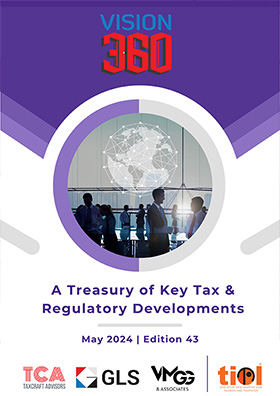'Mean' Less benchmarking
JULY 17, 2014
By Maulik Doshi and Shobana Balasubramaniam, Sudit K Parekh & Co.
THE Finance Minister in his Budget Speech has proposed introduction of "rang " concept for determination of arm's length price as against the "arithmetic mea" currently followed. However, the arithmetic mean would still continue to be used in cases where adequate comparables are not available. The Finance Bill does not provide any details on these aspects and is completely silent on it.
Currently, as per the transfer pricing provisions, if there is more than one arm's length price (ALP) is derived; the final ALP is taken based on arithmetic mean of such values. In case of any of the profit based method, arithmetic mean of the margin of comparable companies is considered to derive the ALP.
The drawback of using an arithmetic mean is that it is very sensitive to extreme results i.e. high and very low margins. An arithmetic mean is not an appropriate average for highly skewed distributions. Let us illustrate the impact with a data set.
Data set of possible profit margins of comparable companies
|
Comparables
|
Profit margin
|
|
Comparable 1
|
22%
|
|
Comparable 2
|
19%
|
|
Comparable 3
|
88%
|
|
Comparable 4
|
10%
|
|
Comparable 5
|
15%
|
|
Arithmetic mean
|
31%
|
|
Upper quartile
|
22%
|
|
Lower quartile
|
15%
|
|
Maximum value
|
88%
|
|
Minimum value
|
10%
|
In the above analysis and as per the existing provisions, a taxpayer would have met with arm's length requirements if he had earned a profit margin of 31%. As can be observed, none of the comparable companies earn a margin of 31% except Comparable 3 and it is because of such extreme results of that comparable that the arithmetic mean had skewed. We have seen in many assessments, the arithmetic mean being higher because of inclusion of 1-2 high margin company. Many tribunal rulings earlier used to provide relief to tax payer by rejecting such high profit margin comparables as either "outliners" or as "abnormal". However, the Mumbai Special Bench (SB) in case of Maersk Global held that merely because the comparable is earning high profits the same cannot be rejected. The use of range rather than arithmetic mean would help a great deal in dealing with such cases.
OECD, UN Manual and most regulations globally accept the conceptual framework of a "range" as compared to an "arithmetic mean". The use of range could vary from a "full range" to an "inter-quartile range". Paragraph 3.57 of the OECD Guidelines advocate use of range especially inter-quartile range to iron out anomaly in process of selection of comparables identified:
".......given the process used for selecting comparables and limitations in information available on comparables, that some comparability defects remain that cannot be identified and/or quantified, and are therefore not adjusted. In such cases, if the range includes a sizeable number of observations, statistical tools that take account of central tendency to narrow the range (e.g. the inter-quartile range or other percentiles) might help to enhance the reliability of the analysis."
Businesses are driven by commercial considerations and in a perfect market, even with related parties transactions, one would find companies earning margins ranging from lower to higher numbers earned by comparable companies. Tax authorities around the world believe so and have, therefore, embraced the range concept.
In the above example, under a range concept, the taxpayer would meet with arm's length requirements if his profitability lies between 15% and 22%, if an inter-quartile is adopted or 10% or 88% if a full-range concept is adopted. Thus, the probability of the taxpayers tested results falling within an arm's length range is much higher than precisely equalling a single point i.e. the arithmetic mean.
Further, in the Indian context, use of range concept would eliminate disputes on inclusion of very high profit making companies and chronically loss making companies in the comparable set since a range would typically exclude such data.
Introduction of the range concept is a welcome move by the Government to align Indian transfer pricing regulations to global best practices. This concept would surely provide relief to number of taxpayers from transfer pricing disputes on outliers.
However, the Government's intention on the continued use of arithmetic mean in case of inadequate comparables may lead to litigation if the proposed regulations do not explicitly define "inadequate comparables". Furthermore, clarification of what would represent "range" whether inter-quartile or a full range is sought. Tax payers would eagerly await further clarifications and detailed guidelines.













